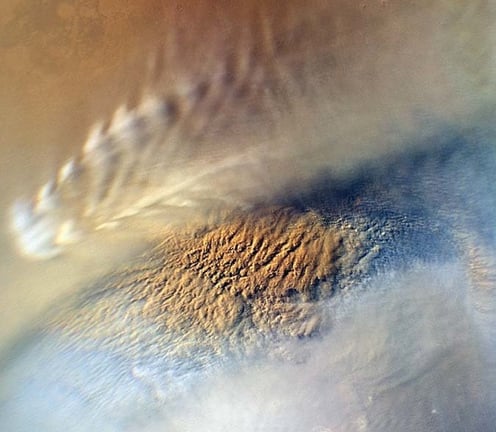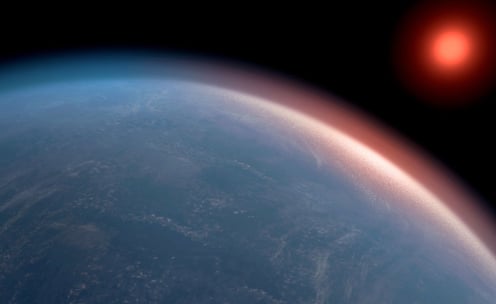Martian water and dust meteorology


NASA/JPL-Caltech/MSSS
The Martian climate is profoundly shaped by the intertwined dust and water cycles, yet the mechanisms involved remain elusive. The timing and occurrence of global dust storms continue to be a mystery, and the global atmospheric transport of water, which governs ice deposits, is poorly understood in both present and past Amazonian climates.
In addressing these questions, I employ advanced climate modeling techniques. My research reveals how the microphysics of ice cloud formation and dust play a pivotal role in controlling the amount of water vapor injected into the atmosphere by the polar caps. Additionally, I have developed a data assimilation technique, akin to those used in weather forecasting, which involves reconciling satellite observations with model outputs in a mathematically optimal way. This innovative approach has resulted in a predictive system capable of forecasting dust transport and storm evolution.
Venus atmospheric dynamics
Despite its slow, retrograde solid body rotation, the atmosphere of Venus rotates much faster, with winds as fast as 120 m/s at its cloud top. How Venus became retrograde, how its rotation is currently balanced and what maintains atmospheric superrotation are some key questions for the evolution of Venus.
By adding the effects of mountain waves in an advanced circulation model, I have revealed how and how much angular momentum is transfered between the atmosphere and the solid body. Using the unique capability of this model to extend from the surface to the thermosphere, I have also explained the mysterious oxygen airglow behavior in the upper atmosphere, and showed that dynamics of the deep atmospheric and cloud level directly impact the thermosphere. These findings will be key to eventually obtain a complete budget of momentum transport in the whole atmosphere of Venus.


Venusian mountain wave seen by Akatsuki / numerically modeled
Habitability of terrestrial exoplanets


Amanda Smith /Science
Due to their cosmic abundance and long lifetimes, red dwarfs are by far the most abundant stars in the Universe. Planets orbiting in the habitable zone of these stars are tidally locked, most likely in synchronous rotation, with crucial consequences for their climate and habitability. However, there is no analogue in the Solar System of such configurations. As observations of terrestrial exoplanets remain challenging, their climate and habitability are left to speculation.
Numerical models remain our best tools to explore those worlds, and I used one to show how the strong gravitational tides have little to no impact on the climates of such planets. Moreover, I develop coupled ice and atmospheric models in order to understand where and how water can be trapped on the permanent nightside, and if ice sheets can impact the planet’s rotational dynamics.